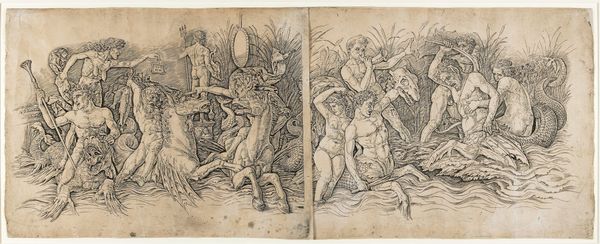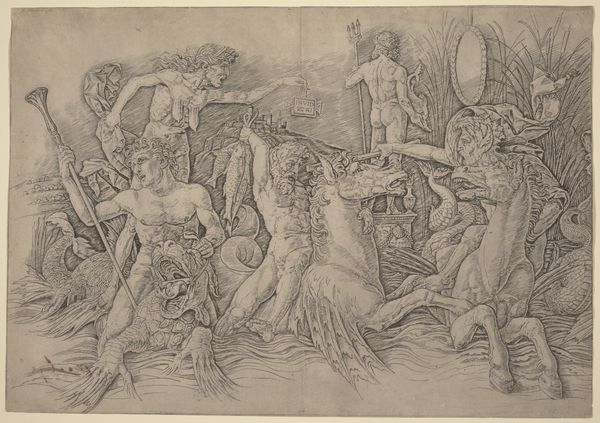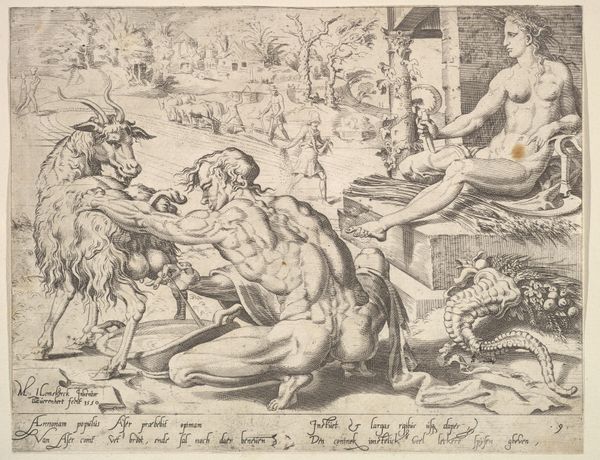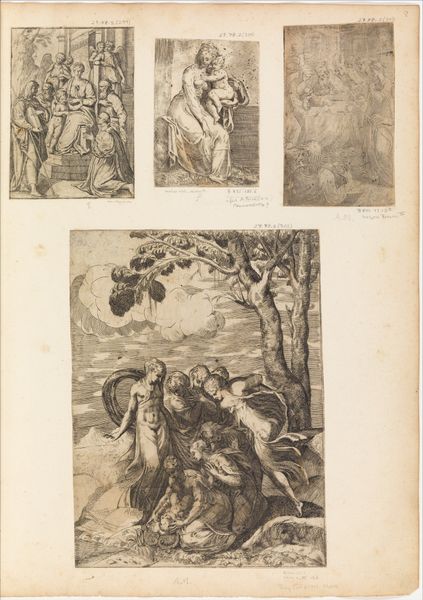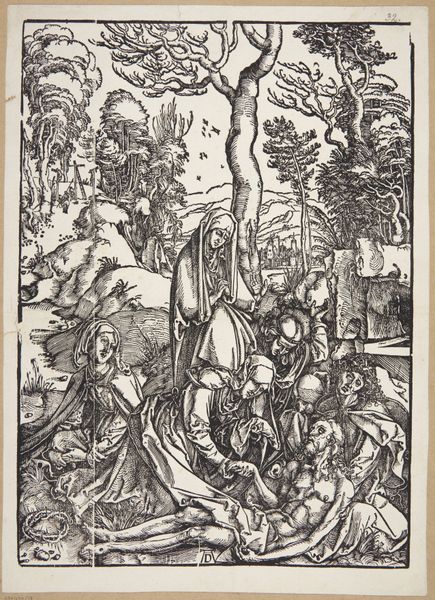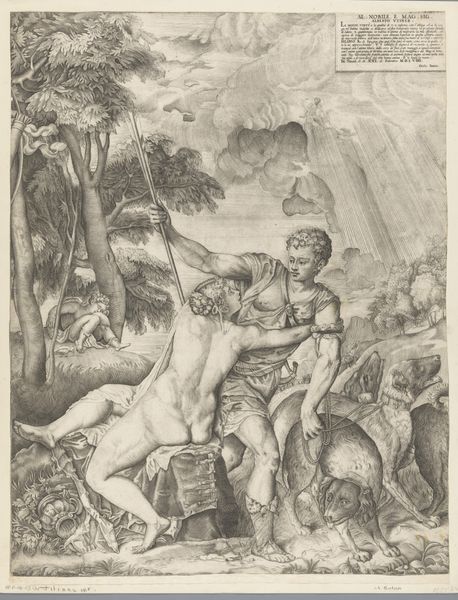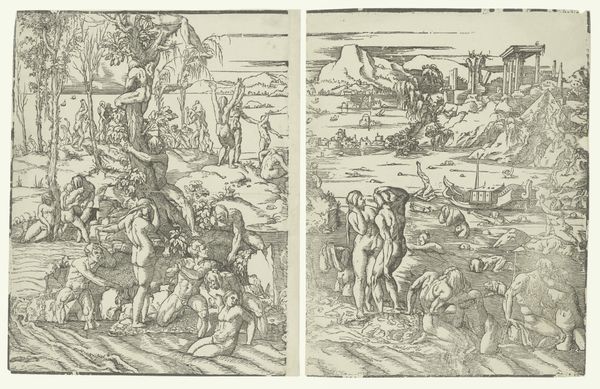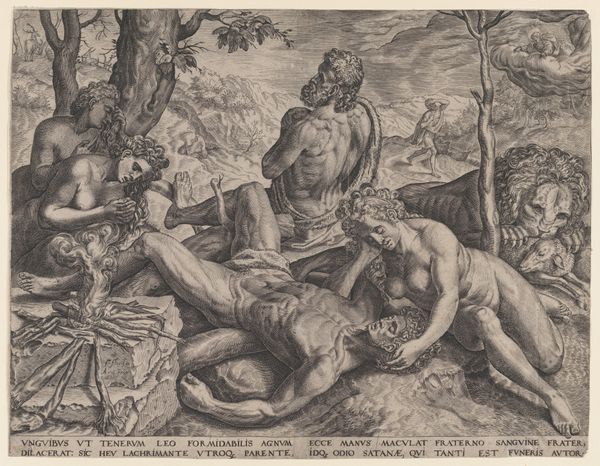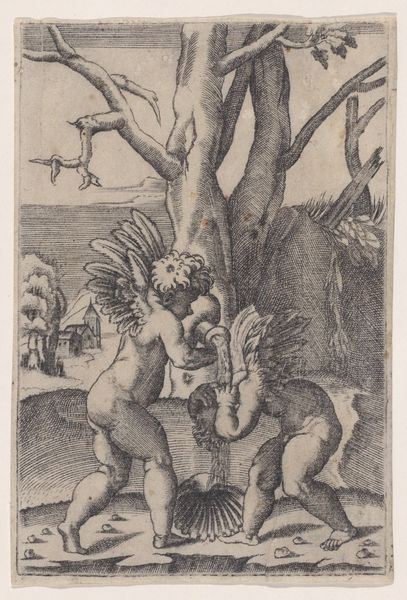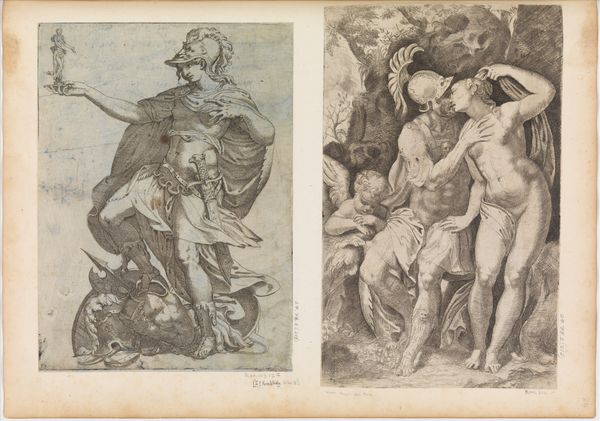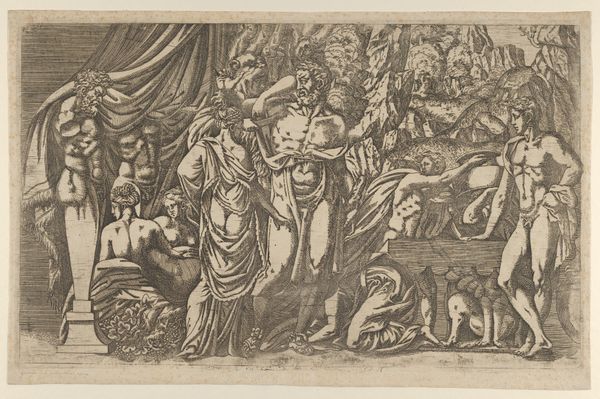
print, engraving
# print
#
figuration
#
line
#
history-painting
#
italian-renaissance
#
engraving
Dimensions: 13 1/4 x 17 3/4 in. (33.97 x 45.09 cm) (image)
Copyright: Public Domain
Curator: Look at this dramatic scene—Andrea Mantegna's "Battle of the Sea Gods (left half)," created around the 1470s, a superb example of Italian Renaissance printmaking residing here at the Minneapolis Institute of Art. The dynamism is immediately striking. Editor: Yes, my first impression is of controlled chaos, isn't it? The sheer energy emanating from this engraving is captivating. All those writhing, muscular bodies... the cross-hatching creates such a rich texture. Curator: Absolutely. Mantegna masterfully uses line to define form and convey movement. Notice how he builds depth through varying the density of the engraved lines. The composition is complex but unified by the consistent style and the underlying theme of conflict. One might interpret this clash of marine deities through a neo-platonic lens, perhaps an allegory of warring internal states. Editor: Or we could view the technical skill involved in such fine detail as a way for Mantegna to showcase his workshop’s capabilities. How labor intensive it would have been to produce, pulling impression after impression with consistent quality! This print allows for wider dissemination of classical subjects beyond the wealthy elite who could commission paintings, changing consumption and challenging traditional artistic practices by exploring this reproducible artform. Curator: An astute point. The engraving process does democratize art to a degree. However, let's not diminish Mantegna's formal choices; consider the carefully rendered musculature of the figures. And that skull, so prominently placed. The skull as *memento mori* and his overall classical construction. Editor: Sure, there’s inherent aesthetic value in its classical construction and presentation, no doubt there were highly skilled assistants engaged in repetitive tasks, emphasizing a production line. That also impacts how we understand Mantegna’s individual ‘genius’. The artist isn’t a solitary creator but central in an industrial model where prints like this extend the artistic hand via dissemination, as we mentioned. Curator: Yes, both valid. Looking at Mantegna’s "Battle of the Sea Gods," we are immersed in art that marries meticulous artistry with early modes of mass production, each enriching our interpretation of its place in history. Editor: Indeed, a single piece of art carrying a powerful mix of meaning and modes.
Comments
minneapolisinstituteofart almost 2 years ago
⋮
According to the sign held by the crone at the upper left, envy has led to discord among the sea gods. When satyrs on seahorses square off, it's fish versus baton, while the nymph-bearing sea-centaurs adopt bonier weapons. This print was the largest engraving ever produced at the time it was made-so large that the image had to be engraved on two separate plates. It so perfectly embodied Renaissance understanding of antiquity that the sculptures based on its design were thought to be genuinely ancient.
Join the conversation
Join millions of artists and users on Artera today and experience the ultimate creative platform.
